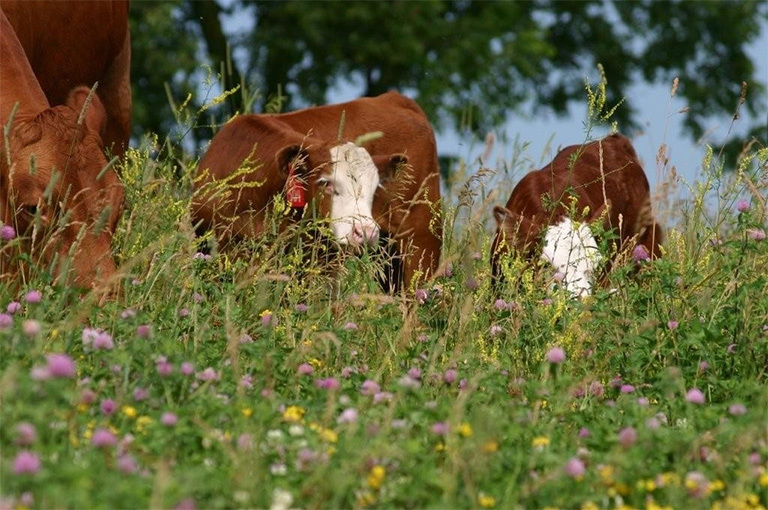Introduction to the problem and scale
- Food security exists when all people, now and in the future, have physical, social, and economic access to sufficient, safe, and nutritious food that meets their food preferences and dietary needs for an active and healthy life.
- Currently, more than 820 million people do not have enough to eat, whilst more than 1.9 billion are overweight or obese.2

- Combining figures for those suffering from both severe and moderate levels, roughly 2 billion people suffer from some form of food insecurity – around 26% of the world population.3
- Maternal and child undernutrition is a contributory factor in 45% of deaths in children under five, while the percentage of the population that is overweight or obese is on the rise in almost all countries, contributing to four million deaths globally.4
- Unhealthy diets now pose a greater risk to morbidity and mortality than unsafe sex, alcohol, drug and tobacco use combined.5
- Diets higher in plant-based foods and lower in animal-based foods are recommended to promote human health, lessen environmental impact, and promote current and long-term food security.
- Climate change - and the accompanying droughts, floods, lower crop yields, and lower nutritional quality of foods - will exacerbate food insecurity, even in the best-case scenarios.
- Food insecurity increases the risk of democratic breakdown and civil conflict.6
- A key factor that drives current food policy is the assumption that by 2050 we need to produce more food to feed the growing world population and that further industrialisation will be necessary to achieve that. However, reducing food loss and waste and aligning diets with dietary guidelines would bridge the gap.
- The EAT Lancet Commission produced the Planetary Health diet which provides guidelines for both a healthy diet and sustainable food production within planetary boundaries that will allow us to feed up to 10 billion people by 2050.7
- One third of all food produced is lost or wasted between production and consumption.8
- Overconsumption of red meat, poultry, and dairy products in OECD countries is approximately 5 times the recommended dietary guidelines.9
How does factory farming affect food security?

- Feeding human-edible cereals to farmed animals is an inefficient conversion of food. For every 100 grams of protein in cereals fed to animals, we only take in 43 grams of protein in milk, 35 grams in eggs, 34 grams in chicken, 15g in pork and 10g in beef10, 11.
- Globally, 36-40% of crop calories and around 20% of the global fish catch are used as animal feed12, 13, 14, 15. Over 50% of the fish catch by numbers goes to fishmeal and oil compared to the approximately 20% by weight16. The capacity to produce adequate food in the future is constrained by land use, declining soil fertility and soil loss, unsustainable water use, and over-fishing.14
- The UN Food and Agriculture Organisation warns that further use of cereals as animal feed could threaten food security by reducing the grain available for human consumption.
- Obesity rates are rising globally and especially in the Global South, driven in part by rising incomes and demand for highly processed and animal-based foods.15
- Current and long-term food security depends on altering dietary choices and patterns and developing more environmentally sustainable food production practices.16

- Free-range animals that consume fresh forage and have higher activity levels often provide meat of higher nutritional quality than animals that are reared industrially; pasture-fed beef has less fat and higher proportions of omega-3 fatty acids than grain-fed beef.17
- Livestock’s primary role in food production should become the conversion of materials that we cannot consume – grass, by-products, food waste, crop residues – into the food we can eat.18, 19
- By reducing the cereals being fed to livestock and instead feeding those cereals to people, we could feed an extra 3.5 billion people.20
- Halving overconsumption (i.e. consuming more than nutritional requirements) could feed an extra 400 million people.21
- A report by the High-Level Panel of Experts on Food Security and Nutrition (HLPE) states that worldwide 25% of food calories are lost or wasted post-harvest or by being discarded by consumers or food businesses. If such loss and waste could be halved an extra 1.4 billion people could be fed.22
Link to the relevant Sustainable Development Goal (SDG)
- SDG 2: Zero Hunger: End Hunger, Achieve Food Security and Improved Nutrition and Promote Sustainable Agriculture23
- FAO, IFAD, UNICEF, WFP and WHO. 2020. The State of Food Security and Nutrition in the World 2020. Transforming food systems for affordable healthy diets. Rome, FAO.
- FAO, IFAD, UNICEF, WFP and WHO. 2020. The State of Food Security and Nutrition in the World 2020. Transforming food systems for affordable healthy diets. Rome, FAO.
- FAO, IFAD, UNICEF, WFP and WHO. 2020. The State of Food Security and Nutrition in the World 2020. Transforming food systems for affordable healthy diets. Rome, FAO.
- FAO, IFAD, UNICEF, WFP and WHO. 2020. The State of Food Security and Nutrition in the World 2020. Transforming food systems for affordable healthy diets. Rome, FAO.
- The EAT Lancet report 2019
- Brinkman, Henk-Jan, and Cullen S. Hendrix. "Food Insecurity and Violent Conflict: Causes." Consequences, and Addressing the Challenges (2011): 513-520.
- The EAT Lancet Commission Report (2019) Planetary Health Diet
- FAO, IFAD, UNICEF, WFP and WHO. 2020. The State of Food Security and Nutrition in the World 2020. Transforming food systems for affordable healthy diets. Rome, FAO.
- Alexander, P., Brown, C., Arneth, A., Finnigan, J., et al 2017. Losses, inefficiencies and waste in the global food system. Agricultural Systems 153: 190–200.
- Cassidy, E.S., West, P.C., Gerber, J.S. and Foley, J.A. 2013. Redefining agricultural yields: from tonnes to people nourished per hectare. University of Minnesota. Environ. Res. Lett. 8 (2013) 034015 (8pp) doi:10.1088/1748-9326/8/3/034015
- Feed conversion efficiency in aquaculture: do we measure it correctly?
-
Cassidy, E.S., West, P.C., Gerber, J.S. and Foley, J.A. 2013. Redefining agricultural yields: from tonnes to people nourished per hectare. University of Minnesota. Environ. Res. Lett. 8 (2013) 034015 (8pp) doi:10.1088/1748-9326/8/3/034015
- Pradhan et al, 2013. Embodied crop calories in animal products. Environ. Res. Lett. 8 (2013) 044044
- FAO, State of the World Fisheries and Aquaculture 2010, UN Food and Agriculture Organisation. Rome
- State of World Fisheries and Aquaculture, 2024, p69
- Mood, A. and Brooke, P., 2024. "Estimating global numbers of fishes caught from the wild annually from 2000 to 2019". Animal Welfare, 33, p.e6
- Nellemann C, MacDevette, M., Manders, T., Eickhout, B., , Svihus B, Prins, A. G., Kaltenborn, B. P. (Eds). The environmental food crisis – The environment’s role in averting future food crises. A UNEP rapid response assessment United Nations Environment Programme, GRIDArendal; 2009.
- Barry M Popkin, Linda S Adair, Shu Wen Ng, Global nutrition transition and the pandemic of obesity in developing countries, Nutrition Reviews, Volume 70, Issue 1, 1 January 2012, Pages 3–21
- Dietary Guidelines Advisory Committee. "Scientific report of the 2015 Dietary Guidelines Advisory Committee: advisory report to the Secretary of Health and Human Services and the Secretary of Agriculture." Agricultural Research Service (2015).
- Research reviewed in Nutritional benefits of higher welfare animal products, 2012. Compassion in World Farming.
- Bajželj, B., Richards, K., Allwood, J., Smith, P., Dennis, J., Curmi, E., & Gilligan, C. (2014). The importance of food demand management for climate mitigation. Nature Climate Change, 4 924-929.
- Schader, C., Muller, A., Scialabba, N., Hecht, J., et al. 2015. Impacts of feeding less foodcompeting feedstuffs to livestock on global food system sustainability. J. R. Soc. Interface 12: 20150891.
- Calculation based on Cassidy et al (Op. Cit.) which states that 9:46 x1015 calories available in plant form are produced by crops globally,
- Alexander, P., Brown, C., Arneth, A., Finnigan, J., et al 2017. Losses, inefficiencies and waste in the global food system. Agricultural Systems 153: 190–200.
- Nellemann, C., MacDevette, M., Manders, et al. (2009) The environmental food crisis – The environment’s role in averting future food crises. A UNEP rapid response assessment
- United Nations Department of Economic Social Affairs Sustainable Development
